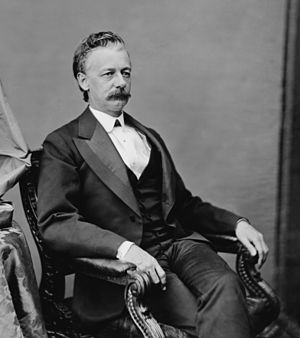 |
| Map of the battle |
As Joseph E. Johnston made plans to fight the Union army of William Techumseh Sherman advancing north through North Carolina, he decided to make a stand at Bentonville some 50 miles south of Raleigh. Johnston had less than 22,000 men to face Sherman's 60,000. Confederate maps showed that the two roads on which the Union wings were marching were twelve miles apart at that point, giving a good opportunity to defeat one without having to fight the other.
 |
| Slocum |
The battle began on March 19, 150 years ago today, when the Federal left wing under Henry Slocum encountered the rebels entrenched at Bentonville. At first, he believed he was facing only light resistance, as the Confederate position had a river at its back. But when one division failed to dislodge the Confederates, he deployed his men into a defensive position and prepared for a more serious fight. At 3 pm, with more Confederates having arrived on the field, Johnston attacked. The charge was a glorious sight. Colonel Charles Broadfoot of North Carolina wrote:
Several officers led the charge on horseback across an open field in full view, with colors flying and line of battle in ... perfect order ... and followed by a battery which dashed at full gallop, wheeled, unlimbered and opened fire. It looked like a picture and at our distance was truly beautiful. It was gallantly done, but it was a painful sight to see how close their battle flags were together, regiments being scarcely larger than companies and a division not much larger than a regiment should be.
Striking Slocum's left flank, the Confederates drove them back in confusion. More Confederates under D. H. Hill continued the attack, and began to roll up the Union line. However James Morgan's division, which comprised the Union right, held firm, and beat off repeated attacks. As night fell, the attacks continued, but were equally unsuccessful. Around midnight the Confederates fell back to their lines and began digging entrenchments. They had won a victory, but had failed to completely break Slocum's line.
 |
| The Harper House, around which much of the fighting took place |





1 comments:
Warfare is a fascinating subject. Despite the dubious morality of using violence to achieve personal or political aims. It remains that conflict has been used to do just that throughout recorded history.
Your article is very well done, a good read.
Post a Comment